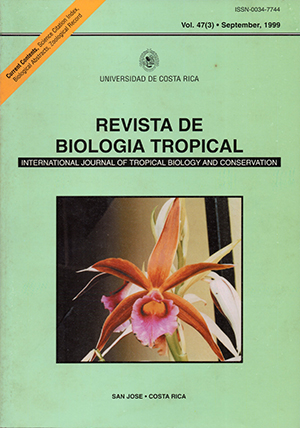Abstract
A total of 28 0 foliicolous lichens and 1 2 Jichenicolous fungi was found in an inventory made in the lowland rain forest at La Selva Bi010gical Station, Costa Rica. ll1e species composition reflects 50 % of the world's diversity of foliicolous lichens and i5 representative for neotropical lowland rain forests. The most common specíes are Gyalectidium filicinum, :-,'poropodium leprieuríi, Trieharia vainloi, Porina epiphylla. Phyllophiale alba, Trichotheliuní epiphyllwll. Mazosia phyllosema, Tricharia ureeolata. and Arthonia leptosperma. Many species show distinct microsite preferences: (1) Characteristic of the shady Ullderstory, inc1uding Arthoniaceae, Opegraphaceae, Pilocarpaceae, and Trichotbeliaoeae; (2) characteristic oflíght gaps, .incJuding Gomphillaceae and Ectolechiaceae; (3) characteristic of the canopy, incJuding Asterothyriaceae and Gomphil1ace.ae. Only few species exhibit preferences towards oertainleaf types, either dicoty1edoneous oc palm lea ves. The microsite preferences agree with earlier established indices, except for a few species for which modified índices are proposed, Communities resulting f'l-om tbese preferences are illustraíed by clustering of phorophytes and associatiol1s oí foliicolous ·lichens. The . three principal associatiol1s correspood to the shady understory,- light gaps and the canopy, whereas two subassociations reflect subtJe phorophyte preferences, Species diversity and compositiona.re strongly affected by the degreeof disturbanceofvegetation typesatLa Selva. Diversity i8 highest in the primary forest and lowest in young successíonal stages.The foliicolons lishen flora of open,anthropogenic vegetatíon resembles that oí l¡ght gaps. 01' fue canopy in the primary forest, while species characteristíc of the forest understory disappear.##plugins.facebook.comentarios##

This work is licensed under a Creative Commons Attribution 4.0 International License.
Copyright (c) 1999 Revista de Biología Tropical






